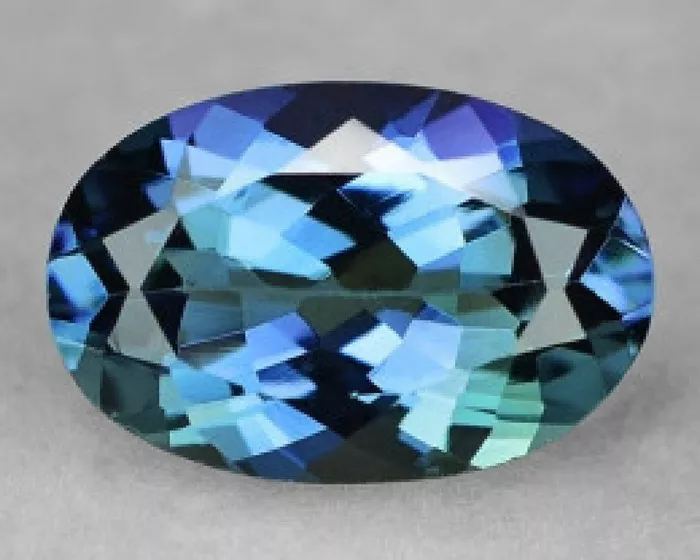Tanzanite is a rare and valuable gemstone renowned for its exquisite blue to violet hues. It belongs to the zoisite mineral family and is distinguished by its striking color variations, ranging from deep indigo to violet-blue, often exhibiting pleochroism, where it displays different colors when viewed from different angles.
Scarcity and Rarity:
Tanzanite is found in only one place on Earth: the Merelani Hills of Tanzania, near the base of Mount Kilimanjaro. This limited geographical occurrence makes tanzanite one of the rarest gemstones in the world. The area where tanzanite is found is relatively small, and the concentration of tanzanite deposits is quite limited compared to other gemstones.
Furthermore, tanzanite is a relatively new gemstone compared to others like diamonds or rubies. It was first discovered in 1967, so its mining history is relatively short. Despite being discovered over 50 years ago, tanzanite remains a rare gemstone, and the supply is not abundant.
Another factor that adds to tanzanite’s rarity is its geological formation. Tanzanite is a form of the mineral zoisite, which is typically brown in its natural state. The blue and violet hues of tanzanite are the result of natural heating of the brown zoisite by the Earth’s geothermal forces. This natural heating process is rare and only occurs in specific geological conditions, further limiting the availability of tanzanite.
Historical Perspective:
Early Years: In the initial years following its discovery, tanzanite prices soared, driven by limited supply and the exclusive control of the market by Tiffany & Company. The gem’s scarcity and unparalleled beauty contributed to its high value, attracting collectors and investors worldwide.
1990s: Tanzania’s shift towards a capitalist economy led to increased production and stability in the tanzanite market. This period saw a decline in prices as the supply expanded to meet growing demand, making tanzanite more accessible to a broader range of consumers.
Post-9/11: Following the tragic events of 9/11, tanzanite faced challenges as rumors circulated regarding its potential use as a funding source for terrorist organizations, notably Al Qaeda. This unfounded speculation led to a further decline in prices as consumer confidence wavered, impacting the gem’s market value.
Factors Influencing Tanzanite Value:
Color: The value of tanzanite is intricately linked to its color. The finest specimens exhibit vivid blue-violet hues, commanding premium prices in the market. Stones with a deeper saturation and fewer secondary tones fetch higher values due to their rarity and aesthetic appeal.
Clarity: Clarity plays a crucial role in determining tanzanite’s value. Flawless stones with minimal inclusions are highly sought after and command premium prices. However, tanzanites with visible inclusions may be priced lower, particularly if the imperfections affect the gem’s transparency and brilliance.
Cut: The quality of cutting significantly impacts a tanzanite’s value. Well-cut stones maximize their brilliance and display the gem’s color to its fullest potential. Precise proportions and facet arrangements enhance the gem’s beauty, making it more desirable to collectors and connoisseurs.
Carat Weight: Tanzanite prices vary based on carat weight, with larger stones typically commanding higher prices per carat. Price ranges can vary significantly, with smaller stones falling into lower price brackets and larger gems entering higher tiers of value.
Price Ranges:
| Quality Grade | Price per Carat ($) |
|---|---|
| Investment Grade | $5000+ |
| AAA Grade | $2000 – $5000 |
| AA Grade | $800 – $2000 |
| A Grade | $400 – $800 |
| B Grade | $200 – $400 |
Note: Prices are indicative and may vary based on market conditions and retailer markups.
Yellow Tanzanite:
In addition to its classic blue-violet varieties, tanzanite also exists in rarer yellow hues.Yellow tanzanite is a rare and exquisite variety of tanzanite, known for its stunning golden-yellow hues. Like its more common blue-violet counterpart, yellow tanzanite is also a form of the mineral zoisite. However, what sets it apart is the presence of vanadium, which gives it its distinct yellow coloration.
The yellow tanzanite’s color can range from a soft, pale yellow to a deep, vibrant gold, with variations in saturation and tone adding to its allure. Due to its rarity and unique coloration, yellow tanzanite is highly sought after by collectors and enthusiasts alike.
In terms of metaphysical properties, yellow tanzanite is believed to carry energies of joy, creativity, and vitality. It is often associated with the solar plexus chakra, which is linked to personal power and self-confidence.
Like other forms of tanzanite, yellow tanzanite is primarily found in Tanzania, specifically in the Merelani Hills near Mount Kilimanjaro. However, its occurrence is much rarer compared to blue-violet tanzanite, making it a prized addition to any gem collection.
In conclusion, tanzanite’s allure lies not only in its mesmerizing blue-violet hues but also in its rarity and historical significance. As a gemstone cherished by jewelry enthusiasts and collectors worldwide, tanzanite continues to captivate with its timeless beauty and enduring appeal.


